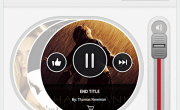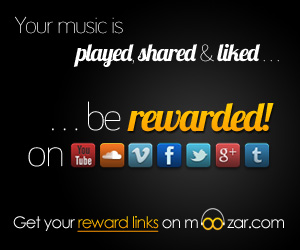By Dana Sedgwick
2012 was the year of big data.
2013 is the year of big engagement.
Last year, the GRAMMYs made waves with their social and digital takeover – breaking new social TV records with 13M social comments, overshadowing the 2012 Super Bowl and absolutely dwarfing every other entertainment event from previous years.
39.9M viewers tuned in to the 2012 ceremony and added their voices to the robust online conversation that praised big winner Adele, was at times controversial (Chris Brown anyone?) and resonated with a universal mourning for Whitney Houston.
So what took place online this past Sunday? That’s a more complicated question than one might expect. CBS broke the “official” story on February 11 – The 55th GRAMMY Awards attracted more than 28M viewers and according to social TV analytics tracker Bluefin, set a new social TV record for an award show with more than 18.7M social media comments and over 10B impressions. That would be a 44% jump over last year, making this year’s ceremony the 2nd most social televised event in history.
But Bluefin is only one service that the GRAMMY social team, led by Beverly Jackson and Lindsay Gabler, enlisted to track the overwhelming conversation. Trendrr, Mass Relevance, and PeopleBrowsr also weighed in with different metrics, analytics, and tactics. CBS ran with the Bluefin number (18.7), while Billboard’s official recap chose to go with Trendrr, which estimated a total activity of only 15.4M comments across Facebook and Twitter.
There are a lot of big numbers flying around out there. And this big data is important because as Evan Greene (CMO, The Recording Academy) told Billboard – “It tells us that fans have an increasing appetite for music for a shared experience around music… the social numbers are increasing important.” But the question remains, what do these big numbers really mean and what story do they tell? Do big numbers necessarily equal big engagement?
SoundCtrl has been fascinated by the GRAMMY’s forward-thinking social strategy ever since Senior Director of Marketing and Social Media, Beverly Jackson, reported the 2012 success story at our Music Hub at Social Media Week NY 2012. This year, her team invited SoundCtrl to get the behind the scenes look at Music’s Biggest Night – getting a lesson in what online engagement really looks like and where Social TV is headed.
While the music rang out all day and Taylor Swift could be seen shimmying, elbow grinding, fist pumping and generally having a BALL (girl was getting down during that Marley tribute), the GRAMMY social team was elbow deep in a far reaching, second screen experience that sought to holistically record the event’s online reach – encompassing much more than LL Cool J’s admittedly zealous promotion of the official tag #GRAMMYs.
In fact, the team was tracking five different official hashtags – #GRAMMYs, #TheWorldIsListening, #GRAMMYGlam, #GRAMMYLive, #SMRSS – and countless other unofficial hashtags – #GRAMMY2013, #GRAMMY, etc. In addition, every mention or comment of an artist nominated for a Grammy was recorded. Every mention of the pre-telecast, the telecast, the red carpet, the after party, and much more was recorded. GRAMMY social pages on 11 different platforms including Twitter, Facebook, Google +, Pintrest, Foursquare, and GetGlue were whirring with activity all day. GRAMMY Live on CBS provided a real-time, personal experience for online viewers who had access to over 10 different cameras around the Staples Center.
Neither Bluefin, nor Trendrr recorded all of the interactions on these various platforms, nor did they encompass the event beyond the actual telecast. Only one service did, PeopleBrowsr, which reported a 91% year-to-year growth, with 24.8M total social mentions. That’s what is reflected here by their infographic, (also below), which takes into account all the different levels of engagement that Jackson’s team took such effort to cultivate, collect and record.
But again, does the larger number from PeopleBrowsr necessarily mean anything? Just like the debate over whether artist Facebook “likes” translate into actual fans, does a number like 24M really translate into an accurate portrayal of engagement?
Jackson was able to break it down for me… let’s go back to that Bluefin number, which although flawed, demonstrates an accurate ratio of “comments” (18.7M) to “impressions” (10B). Comments are specific mentions by individuals, while impressions are the ripples that those comments generate… this means that for every mention the GRAMMYs got, they got 4 in return. The average previously recorded for televised events? Only 1.3 in return.
Furthermore, even though it’s without doubt that less viewers tuned into the telecast this year than last – no matter which way you look at it (Bluefin, Trendrr, or PeopleBrowsr), the social numbers grew. Less people viewing, but at a higher level of engagement.
That’s the real story… how Jackson’s team has essentially created a new standard for engagement. It’s not just that the GRAMMYs were an awesome event and therefore got lots of people talking – although from our crow’s nest overlooking the music world, we had to agree with Bill Werde (Editorial Director, Billboard) when he said that in terms of performances, this was one of the best GRAMMYs ever.
The new frontier for major event platforms needs to focus on building not just a great event, but also a thoughtfully conceived social strategy that redefines the ways we communicate in real time across multiple devices and platforms. 2012 was the year of big data. 2013 is the year of big engagement.
The concept has its growing pains. Numbers without foundation float around the Internet and undercut the real narrative. As Evan Greene stated, “There’s no standard evaluation metric for social.”
Beverly Jackson and Lindsay Gabler describe how their team is redefining engagement strategy and what they learned from the 55th GRAMMY Awards experience.
SoundCtrl: Given last year’s big impressions, how did you prepare for this year’s online engagement? What were your team’s goals and were they met?
Gabler: A lot of people assume our goal was to be the biggest, beat the Super Bowl, etc. But really, our goal was to figure out how to change the game all over again. Not just think about numbers but define what true engagement looks like, bring in a new audience, and get people involved at all levels. Some ways we managed this was to partner with 5-6 new platforms such as Pintrest (where we ran GRAMMY contests nearly doubling our followers) and Google+ (where we gained 1M new followers by asking people to submit videos of who they would thank if they won a GRAMMY).
SoundCtrl: How does such a small team monitor and record such a vast conversation across so many different platforms?
Gabler: A lot of it comes from Beverly knowing the right teams to include – Mass Relevance, Trendrr, PeopleBrowsr, etc. It’s also important that between us, there is an exceptional level of understanding and trust. A team that relies on quickly reacting to real time events needs to work in sync, share the same goals, follow the same script and know when to jump in to adjust strategy and tweak plans.
Jackson: Lindsay is @TheGRAMMYs all night, not an easy task. She does a great job of reacting in real time to events on stage, giving clear call-to-action tweets like “RT if you loved that JT performance!” that are super successful at pulling people into the dialogue. There’s no script, it’s all her.
SoundCtrl: What, if anything, surprised you about the conversation peaks this year?
Jackson: Each agency released different peaks depending on what they were tracking – some put it at Frank Ocean’s win, the Rihanna performance and the Marley Tribute scored high too. The fact is that it was a pretty solid show. There was no one defining moment that created a firestorm, which often comes from a mistake (or a blackout, ahem).
Something that did surprise me was the chatter about LL over mentioning #GRAMMYs, while his personal twitter feed remained pretty dead all night. Made him look out of touch. Now, to most people, this reflects poorly on him when in actuality, it reflects poorly on his social team. CBS could have engaged our GRAMMY community bloggers to tweet @llcoolj, then he could have easily and organically interacted with them.
SoundCtrl: How do you anticipate “second screen” engagement to evolve and integrate further in major event platforms like the GRAMMYs? Where is this online/offline relationship headed?
Jackson: Our second screen experience is married to our mobile experience. Mobile is social and social is mobile. 75% of tweets came through mobile, which means people watch television with their tablets and smart phones in hand.
Given that, one of the camera angles available on GRAMMY Live should have focused on the conversation dashboard that PeopleBrowsr built for our command center. Viewers could watch in real time as artists prepped backstage, could focus on audience members and even check out the lobby. One of these options should have been the heat map. People who use social are smart enough to know that their driving something.. If you own the car, you should let them see the engine!
Keep tuned for a full recap of SoundCtrl’s GRAMMY Music Technology Lab, which kicked off GRAMMY weekend with a bang the morning of Friday, February 8.




















[...] if you believed newspaper was the ultimate option for advertising, it just isn’t anymore. Social media is taking things over, and it’s working [...]